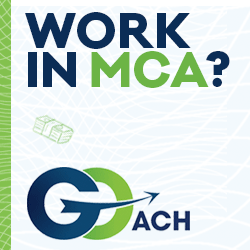Results 1 to 25 of 36
Threaded View
-
04-21-2014, 06:27 PM #21
New Merchant Cash Advance Regulations ???
Stack funding refers to a situation in which a merchant “stacks on” an additional merchant cash advance while still owing another lender for a different advance? right ?. The question is, why are so many merchants choosing to take out second, third and even fourth cash advances when they already have existing balances?
Lending Regulations For MCA
Potential lending regulations have been a hot topic in the lending industry. Whether or not stacking will become more highly regulated is secondary to the fact that any and all regulations should be fair. They should apply to all three parties involved in business lending: The borrower, the broker, and the lender. Unfair practices such as refinancing and delaying balance and payoff information should be replaced with options that that benefit all parties.
Limited Options for Additional Capital
One major reason that merchants are taking out additional cash advances is because many lenders are holding off on offering the merchant more working capital. Many of these lenders have arbitrary financing rules that benefit them rather than the merchant and prevent the merchant from receiving necessary funding.
Delays in Providing Balance and Payoff Letters
When a merchant finds a better offer and decides to take out another advance, the second lender often requires a balance or payoff letter before financing the merchant. Most lenders are slow to give this information and may take days to provide these letters. They may use this long delay convince the merchant not to take out a second loan.
Lack of Advanced Technology
Many lenders are very slow to upgrade their technology. Most still rely on Excel spreadsheets as their primary method or record-keeping. This is a major reason that these lenders are slow to provide the merchant with loan status information.
Expensive Refinancing Deals
In cases where the merchant is seeking additional working capital, many lenders offer refinancing “options” that sound like good opportunities but in fact lead the merchant to pay large sums in additional FR. Re-financing can also reduce the amount of time that the merchant has to pay off their balance. 95% of lenders use refinancing.
Refinancing vs. Add-Ons
An Example of Refinancing
Let's say a merchant gets funded from lender X for $50,000 at 1.38% to pay back $69,000. The merchant is given 6 months to pay off this advance. The merchant's daily payment is $547.61, or $11,400 per month.
This merchant, 3 months later, has paid off 50% of the cash advance and has a remaining balance of $34,500. The merchant calls lender X and asks for additional funds. Lender X approves merchant for $50,000 again. However, lender X gets the merchant to agree to still pay off the existing balance of $34,500. Lender X takes $34,500 out of the new $50,000 approval to pay itself off. This means that the merchant will net only $15,500 on this second approval. Also, note that the merchant originally had 6 months to pay off the original $50,000, but was forced to pay it off in 3 months.
The merchant's new balance is $69,000. The merchant is getting charged for money that Lender X is giving back to itself. Now the merchant is paying full FR on that second $50,000 dollar loan when the merchant only received $15,500 of it.
Let's look at how much FR the merchant is actually paying. The merchant's original FR was 38%, or 76% over a whole year. After the merchant is refinanced, this FR on the first loan jumps to 800%. This is a result of just the FIRST refinance. Most cash advance companies refinance up to 4 or 5 times a year, and you can see why. What we need is regulation on this unfair practice of refinancing.
An Example of an Add-On
Let's say a merchant gets funded Funding for $50,000 at 1.38% to pay back $69,000 in 6 months. The merchant's daily payment is $547.61 or $11,400 per month.
This merchant, 3 months later, has paid off 50% of the cash advance and has a remaining balance of $34,500. The merchant calls and asks for additional funds. x lender approves the merchant for $35,000 to pay back $48,300. The $48,300 will be added onto the current balance $34,500 for a total of $82,800. The FR is not compounding. The merchant nets the FULL $35,000 that he is approved for. Also, the merchant still has the full agreed-upon 6 months to pay off the original $50,000 advance.




 Reply With Quote
Reply With Quote















